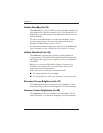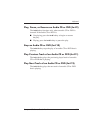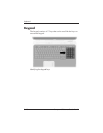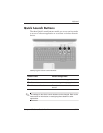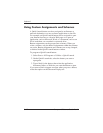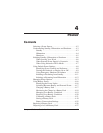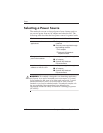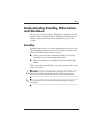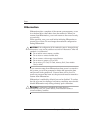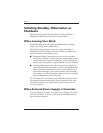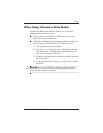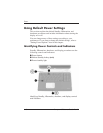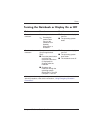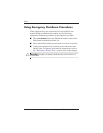
4–4 Startup and Reference Guide—Part 2
Power
Hibernation
Hibernation takes a snapshot of the current system memory, saves
it to the hard drive, then shuts down the notebook. When you
resume from Hibernation, your work returns to the screen exactly
as you left it.
When possible, save your work before initiating Hibernation to
prevent loss of data. Do not change the notebook configuration
during Hibernation.
Ä
CAUTION: If the configuration of the notebook system is changed during
Hibernation, it may not be possible to resume from Hibernation. When the
notebook is in Hibernation:
■ Do not add or remove memory modules.
■ Do not insert or remove the hard drive.
■ Do not connect or disconnect external devices.
■ Do not insert or remove a CD or DVD.
■ Do not insert a PC Card, SD Card, Memory Stick, Smart Media
Card, or MMC.
If you cannot resume from Hibernation when power is restored to
the system, you will be prompted to delete the restoration data
and proceed with system boot. Unsaved data will be lost. If a
power-on password has been set, the password must be entered to
resume from Hibernation.
Hibernation is enabled by default, but can be disabled. To reduce
the risk of power loss during a low battery condition, users should
disable Hibernation only during a battery pack calibration.
Ä
CAUTION: If Hibernation is disabled, the system does not
automatically save your system memory if the notebook reaches a
critical low-battery condition.



